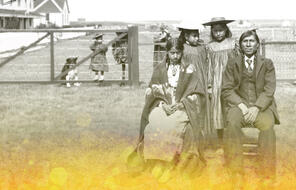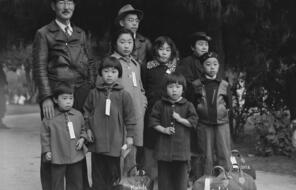Race Theory
The race theory 1 of the late nineteenth and early twentieth centuries was based on bad science and ideas that are discredited by people who study genetics today. It is worth exploring them nevertheless, not only to better understand the history of racism but also because these ideas continue to reverberate in the way some people talk about racial differences today. Twenty-first-century race theories view race primarily as a social category that plays a role in how people interact with each other (often negatively). While there are minuscule genetic differences between groups, those have no effect on the moral, intellectual, or dispositional differences between them.
In the second half of the nineteenth century, scientists and anthropologists began to talk about the differences between Europeans and the indigenous population in terms of race. During that time, many scientists had begun to promote the idea that different races had different hereditary makeups and, as a result, had different physical and mental capacities. They decided that some races—usually theirs—were superior to others. Soon scholars, politicians, clergymen, artists, and others began to use pejorative terms such as redskin to mark the differences between the indigenous people and the Europeans.
Among the first supporters of racial science was the American anthropologist Samuel George Morton. Building on the common observation that human beings have bigger brains and more skills than any other animal species, Morton falsely speculated (with very little evidence) that the same is true within the human species; a person’s intelligence, personality, and morality, he assumed, were linked to skull size. 2 Smarter groups or races have larger brains and are therefore more advanced than others, Morton theorized, and he claimed that this was an “objective” way to rank the different races he identified. Morton also believed that the larger a group’s skull capacity, the more “civilized” the group could be. 3 Scientists have long since discredited these ideas. 4
Drawing from his pseudo-scientific research, Morton grouped people based on their physical features and compiled characterizations of each “race” into an 1839 volume called Crania Americana. In the excerpts below, Morton contrasts descriptions of Europeans, Native Americans, and Africans.
Europeans
The Caucasian Race is characterized by a naturally fair skin, susceptible of every tint; hair fine, long and curling, and of various colors. The skull is large and oval, and its anterior portion full and elevated. The face is small in proportion to the head, of an oval form, with well-proportioned features. . . . This race is distinguished for the facility with which it attains the highest intellectual endowments. . .
The spontaneous fertility of [the Caucasus] has rendered it the hive of many nations, which extending their migrations in every direction, have peopled the finest portions of the earth, and given birth to its fairest inhabitants. . . .
Native Americans
The American Race is marked by a brown complexion; long, black, lank hair; and deficient beard. The eyes are black and deep set, the brow low, the cheek-bones high, the nose large and aquiline, the mouth large, and the lips tumid [swollen] and compressed. . . . In their mental character the Americans are averse to civilization, and slow in acquiring knowledge; restless, revengeful, and fond of war, and wholly destitute of maritime adventure.
They are crafty, sensual, ungrateful, obstinate and unfeeling, and much of their affection for their children may be traced to purely selfish motives. They devour the most disgusting [foods] uncooked and uncleaned, and seem to have no idea beyond providing for the present moment. . . . Their mental faculties, from infancy to old age, present a continued childhood. . . . [Indians] are not only averse to the restraints of education, but for the most part are incapable of a continued process of reasoning on abstract subjects. . . .
Africans
Characterized by a black complexion, and black, woolly hair; the eyes are large and prominent, the nose broad and flat, the lips thick, and the mouth wide; the head is long and narrow, the forehead low, the cheek-bones prominent, the jaws protruding, and the chin small. In disposition the Negro is joyous, flexible, and indolent; while the many nations which compose this race present a singular diversity of intellectual character, of which the far extreme is the lowest grade of humanity. . . .
The moral and intellectual character of the Africans is widely different in different nations. . . . The Negroes are proverbially fond of their amusements, in which they engage with great exuberance of spirit; and a day of toil is with them no bar to a night of revelry.
Like most other barbarous nations their institutions are not infrequently characterized by superstition and cruelty. They appear to be fond of warlike enterprises, and are not deficient in personal courage; but, once overcome, they yield to their destiny, and accommodate themselves with amazing facility to every change of circumstance.
The Negroes have little invention, but strong powers of imitation, so that they readily acquire mechanic arts. They have a great talent for music, and all their external senses are remarkably acute. 5
Connection Questions
- What assumptions did Morton make about the differences between humans? What did he and other nineteenth-century theorists like him believe that race explained? How might someone living at his time have challenged Morton’s assumptions?
- What role do ideas about race play in your community? How do they influence the way people think and act?
- 1Contemporary terms contained in this reading, including “redskin” and “Negros,” reflect the terminology used at the time this primary source was written. Neither these terms nor the value judgment Morton and his contemporaries attached to them are acceptable today.
- race theoriesrace theories: European race theories emerged in the late nineteenth and early twentieth century from colonial encounters with indigenous people and a growing interest in heredity, later known as genetics. Race theorists promoted the idea that different human groups had different hereditary makeups and, as a result, had different physical and mental capacities. Scientists spoke of the indigenous population in terms of race. Pejorative terms like “redskin” were used to mark the differences between the indigenous people and the Europeans. These ideas, although widely considered untrue today, continue to reverberate in Western culture and media.
- 2Alexandra Horowitz, “Why Brain Size Doesn’t Correlate With Intelligence,” Smithsonian Magazine, accessed September 17, 2014.
- 3Morton’s skull study was criticized by many scientists. For more on the subject, see Nicholas Wade, “Scientists Measure the Accuracy of a Racism Claim,” New York Times, June 13, 2011.
- 4We thank David Jones for his help with this section (private communication, June 17, 2015).
- 5Samuel George Morton, Crania Americana (John Pennington, 1839) 5, 6, 50, 54, 81.
How to Cite This Reading
Facing History & Ourselves, "Race Theory," last updated September 20, 2019.















